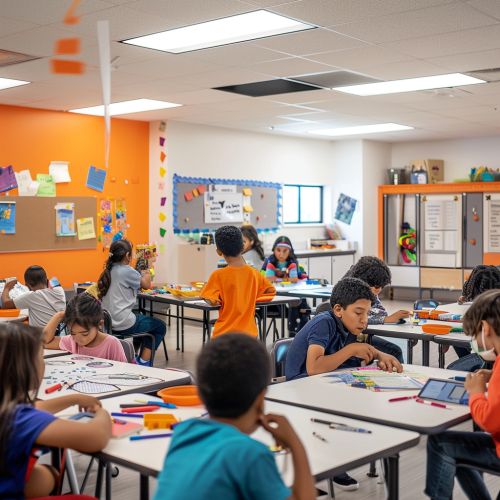Project-Based Learning
Introduction
Project-Based Learning (PBL) is an instructional method that encourages students to learn by actively engaging in real-world and personally meaningful projects. In educational psychology, PBL is considered a constructivist pedagogy, which means it allows students to construct their own knowledge and understanding through experience and reflection.


History and Development
The roots of project-based learning can be traced back to the progressive education movement led by John Dewey's philosophy of education in the early 20th century. Dewey advocated for an education that was both interactive and experiential, which laid the groundwork for the development of PBL. In the 1960s and 1970s, PBL gained more recognition as educators sought to move away from traditional rote learning methods towards more engaging and effective teaching strategies.
Principles of Project-Based Learning
Project-based learning is guided by a set of principles that distinguish it from traditional teaching methods. These principles include:
- Authenticity: PBL projects are designed around real-world problems or questions that are relevant and interesting to the students. This authenticity increases student engagement and motivation.
- Student-centered: In PBL, students take an active role in their learning process. They are responsible for making decisions about the project, conducting research, and presenting their findings.
- Collaborative: PBL often involves group work, where students collaborate to complete the project. This collaboration fosters teamwork and communication skills.
- Reflective: Reflection is a key component of PBL. Students are encouraged to reflect on their learning process and the outcomes of their project, which enhances their critical thinking skills.
- Interdisciplinary: PBL projects often involve multiple subject areas, allowing students to see the connections between different fields of study.
Benefits of Project-Based Learning
Numerous studies have shown that project-based learning can have a positive impact on student learning outcomes. Some of the benefits of PBL include:
- Improved academic performance: Students who participate in PBL often show improved academic performance compared to those who are taught through traditional methods.
- Enhanced problem-solving skills: PBL encourages students to tackle complex problems, which can enhance their problem-solving and critical thinking skills.
- Increased engagement and motivation: The authentic and student-centered nature of PBL can increase student engagement and motivation.
- Development of 21st century skills: PBL can help students develop important 21st century skills such as collaboration, communication, creativity, and critical thinking.
Challenges and Criticisms of Project-Based Learning
While project-based learning has many benefits, it also comes with its own set of challenges and criticisms. Some of these include:
- Time-consuming: PBL can be more time-consuming than traditional teaching methods, both in terms of planning and implementation.
- Requires a shift in teacher role: In PBL, the teacher's role shifts from being a "sage on the stage" to a "guide on the side". This can be challenging for teachers who are used to traditional teaching methods.
- Assessment difficulties: Assessing student learning in PBL can be challenging due to its complex and multifaceted nature.
Despite these challenges, many educators believe that the benefits of PBL outweigh its drawbacks and continue to advocate for its use in classrooms.
Conclusion
Project-based learning is a powerful pedagogical approach that can enhance student learning and engagement. While it comes with its own set of challenges, the benefits of PBL make it a worthwhile approach to consider in modern education.
